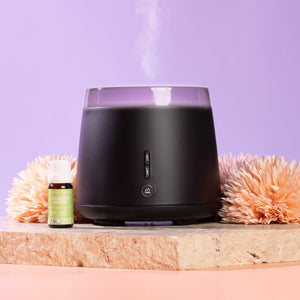Mindfulness Techniques for Enhanced Relaxation and Sleep
Is your mind racing the moment your head hits the pillow? You replay the day's events, worry about tomorrow, and feel sleep getting further and further away. You're not alone in this nightly struggle, but there is a gentle and effective way to find peace.
By learning a few simple mindfulness techniques, you can calm that inner chaos. It's about teaching your brain to let go of the stress that keeps you awake. You just need a little patience and a willingness to practice mindfulness exercises to finally get a good night's sleep.
Table Of Contents:
- What is Mindfulness and How Does it Help You Sleep?
- Foundational Mindfulness Techniques for Enhanced Relaxation and Sleep
- Deeper Mindfulness Practices for Restful Sleep
- Common Questions About Mindfulness for Sleep
- Conclusion
What is Mindfulness and How Does it Help You Sleep?
So, what is this mindfulness stuff anyway? Simply put, it is a mindfulness practice involving paying attention to the present moment without judgment. It's about noticing your thoughts, feelings, and physical sensations as they are, not as you wish they were.
A racing mind often gets stuck in a loop of worry about the past or future, but practicing mindfulness brings you back to the here and now. According to the American Psychological Association, this practice helps reduce the kind of repetitive thinking and mental chatter that fuels anxiety and disrupts sleep. Studies shows that mindfulness-based stress reduction programs significantly aid in managing stress.
It teaches you to quiet the noise so your body can finally get the rest it needs. By improving your mental health, you are setting the stage for better sleep quality. This stress reduction technique is a powerful tool against poor sleep.
Foundational Mindfulness Techniques for Enhanced Relaxation and Sleep
You do not need to become a Zen master overnight. Starting with a few foundational exercises can make a huge difference in your ability to relax before bed. These are some of the most effective and easy-to-learn methods to incorporate mindfulness into your life.
Mindful Breathing
Your breath is your most powerful tool because it is always with you. Focusing on it can anchor you when your thoughts feel like a stormy sea. This is the simplest entry point into a mindfulness meditation practice.
First, find a comfortable position, either sitting up or lying down. Close your eyes gently and bring your attention to your mindful breathing. Just notice the sensation of the air entering your nostrils, filling your lungs, and then leaving your body.
When your mind wanders, and it will, just gently guide your focus back to your breath. Each time you do this, you are strengthening your mindfulness muscle. This simple mindfulness exercise can even help lower your blood pressure and heart rate, signaling to your body it is time to rest.
The Body Scan Meditation
Do you ever feel tense without knowing why? We often hold stress in our bodies without even realizing it. The body scan meditation is a fantastic mindfulness exercise to check in and release that built-up physical tension.
Start by lying down and bringing your attention to your toes on one foot. Focus on noticing sensations you feel there—warmth, coolness, tingling—without judging them as good or bad. Slowly move your awareness up your foot, to your ankle, calf, and continue all the way up your body, a process known as body scans.
The goal is not to feel a certain way but to just notice what is happening with each physical sensation. Studies show that a consistent body scan or scan meditation practice can significantly improve sleep quality. It connects your mind and body, promoting deep muscle relaxation perfect for falling asleep and achieving restful sleep.
Creating a Mindful Bedtime Routine
You can turn your regular evening activities into a mindfulness practice. This helps you transition from the busyness of the day to a state of calm. It's about doing things with intention instead of on autopilot as part of your daily routine.
Consider turning off bright screens at least an hour before bed. Maybe you can mindfully sip a cup of warm, caffeine-free tea, which can aid in improving sleep. Diffusing a Organic Sleep Blend from Livelly Living
By focusing your senses on this simple act, you ground yourself in the present. You could also incorporate gentle stretches, like those from tai chi, or spend a few minutes journaling to release any negative thoughts from the day. Creating a consistent daily practice signals to your body and mind that it's time to wind down for a good night's sleep.
Deeper Mindfulness Practices for Restful Sleep
Once you are comfortable with the basics, you might want to explore other effective mindfulness exercises. Guided meditations are a great option, especially for beginners. Many sleep apps offer sessions specifically for falling asleep.
Guided imagery is another powerful technique. It involves creating a peaceful and calming scene in your mind, such as a quiet beach or a serene forest. Focusing on the sensory details of this mental picture helps to distract from stress anxiety and encourages relaxation.
Another meditation practice is open monitoring, where you observe your thoughts and feelings without getting caught up in them. You simply watch them come and go, like clouds in the sky. This practice helps you detach from the mental chatter that can keep you awake, helping you stay asleep even if you wake in the wee hours.
Common Questions About Mindfulness for Sleep
Getting started with a new practice often comes with questions. It is normal to wonder if you're doing it right. Here are a few common concerns.
| Question | Answer |
| How long should I practice each night? | Start with just 5 to 10 minutes. Consistency is more important than duration, so find a length that feels manageable for your daily practice. |
| What if I fall asleep during the practice? | That is great. It means you are relaxed, which is the whole point of using a mindfulness meditation practice for improving sleep quality. |
| Will this work the very first night? | It might, but it is more likely to work with regular practice. Be patient with yourself as you learn and don't try to force sleep. |
| What if my mind is too busy? | That is completely normal. The goal is not to stop your thoughts but to change your relationship with them by gently returning your focus. |
Conclusion
Ending your day with calm and quiet is possible, even when life feels chaotic. Mindfulness is not about clearing your mind completely; it is about learning to sit with your experience thoughts without letting them control you. It gives you the power to respond to stress instead of reacting to it.
Practicing these simple mindfulness techniques consistently can pave the way for more peaceful nights and more energized days. Whether you start with mindful breathing or a full body scan meditation, you are taking a positive step. You can achieve enhanced relaxation and finally get the good night's sleep you deserve.




















